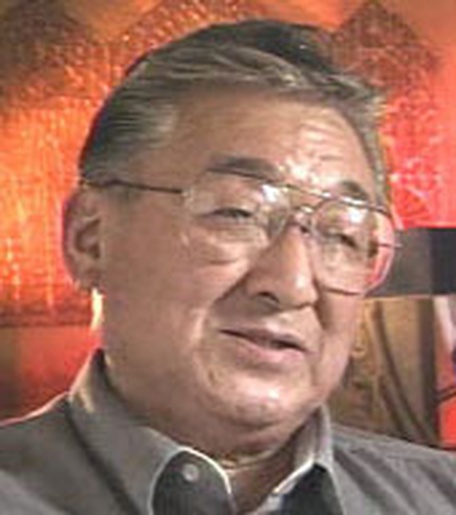

Voices from the Camps
 densho
densho
|

|
||
| Licensing | ||
Tule Lake - reunited with his father
To view video, Click Here. Many first-generation men of Japanese ancestry (issei) spent the war years separated from their families. In this video segment Frank F. tells of the bittersweet reunion with his father after three years of separation.
"Yeah, I think when the Justice Department okayed his release from Santa Fe, New Mexico, to Tule Lake and I said, "Dad's coming back, man." And then I told Seibo, who was still in camp, "He's coming back." And so we knew what day -- they didn't tell us what time. So waiting for a truck to drop him off, and we waited and waited -- and I remember it was in the afternoon, and it was a hot day, and the truck dropped him off, and he had to get off the back, and I grabbed his luggage and I brought it inside. And, now, I didn't see him from '41 December 7th 'til, '44 something, in '44. So that's a few years, and I think when I've grown up so much... I, my body's changed, my looks changed and I'm more a man. I mean, I've grown about 5-6 inches. But the bad scenario was, as he went around the room, he nodding his head and kinda greeting everybody by looking at them, and kind of saying, "I think I know you, but, hi, how are you." But then he points to me, of all people, and he says, "Who's this boy?" And, you know, that, that really shook me. But I, I never forgot that, because I felt loss at that time. And I think that mental part of it all, that's what, I think the effect of camp does to you. It isn't the other monetary kind of things that get to you, 'cause you could always sort of adjust. But the loss of a family tie. It was tough."
Frank F. Interview - Copyright © 1997 Densho. All Rights Reserved.
Tule Lake was located at an elevation of 4,000 feet on a flat treeless area in Modoc County, 35 miles southeast of Klamath Falls, Oregon, and 10 miles from the town of Tulelake. (The town is spelled as one word and the incarceration camp as two.) Mt. Shasta is 50 miles away and visible on a clear day. The soil is sandy loam; vegetation is sparse grass and sagebrush. Winters are long and cold; summers are hot and dry.
Population Description: First to arrive were 500 volunteer residents from the Portland and Puyallup Assembly Centers. Others arrived from the Marysville, Pinedale, Pomona, Sacramento, and Salinas Assembly Centers in California. Some were sent directly from the southern San Joaquin Valley. After it became a segregation center, the camp held people from California, Hawaii, Washington, and Oregon.
To view facts and photos of Tule Lake, Click Here to view Densho's interactive Sites of Shame map. Then click on the red dot corresponding to Tule Lake. Courtesy of Densho: The Japanese American Legacy Project
Based on this original

|
Tule Lake - Reunited with Father |
 Voices from the Camps
Voices from the Camps
 Journal feed
Journal feed
